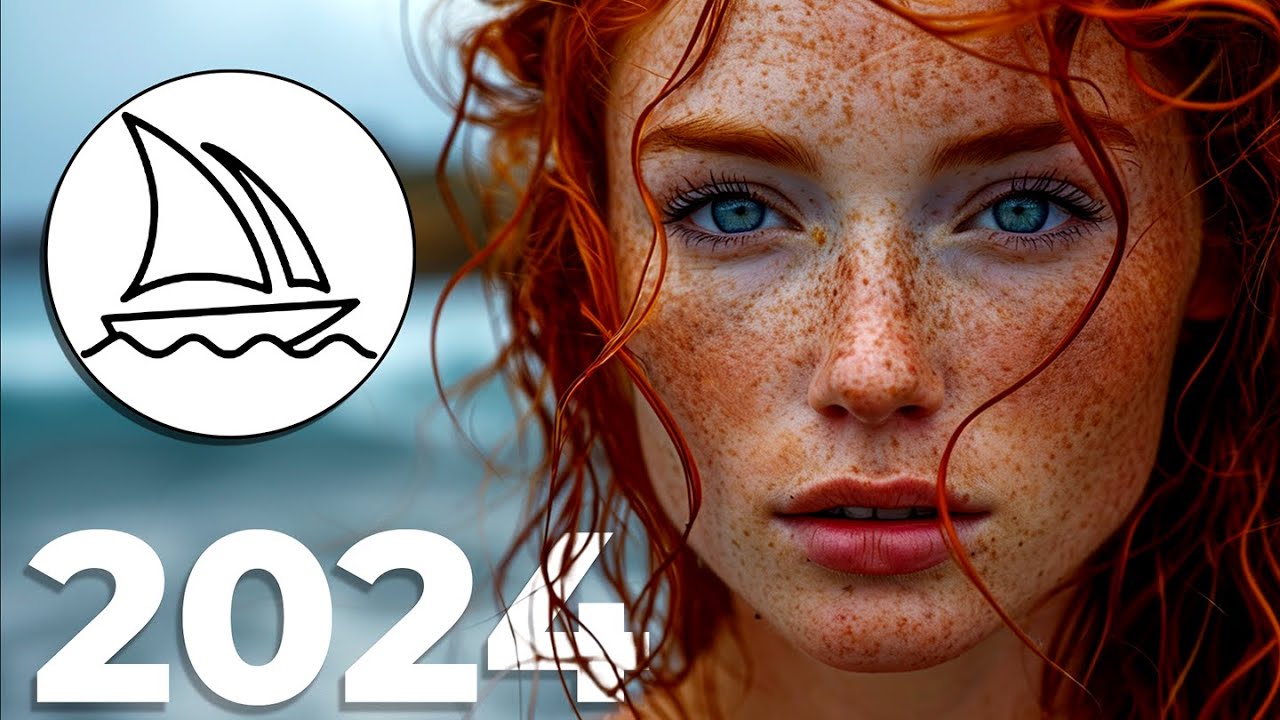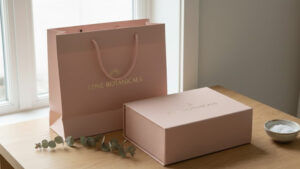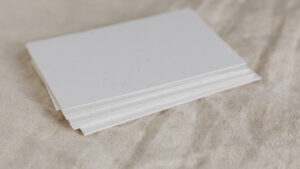Last Updated on April 15, 2024 by Packoi Team
Packaging design is crucial for businesses as it can help distinguish a product from its competitors and make it stand out on the shelves. A well-designed package can influence a consumer’s perception of a product and can even drive purchasing decisions.
This article will provide readers with a comprehensive guide to packaging design, covering everything from its definition to its significance in business. We will discuss packaging design elements, the latest trends, inspiration, and how to create an effective packaging design strategy. So, let’s dive in and explore the packaging design world together.
What Is Packaging Design?

Packaging design is the process of creating a product’s container or wrapping that protects the product during storage, transportation, and handling and plays a vital role in attracting consumers to purchase the product. Packaging design is not just about creating an aesthetically pleasing package; it must also be functional and practical.
The design process includes selecting appropriate materials, determining the packaging’s size and shape, creating branding elements, selecting typography and color schemes, and incorporating any necessary labels and instructions. A good packaging design should communicate the product’s features and benefits and create an emotional connection with the consumer.
Packaging design is a crucial aspect of a product’s marketing strategy and can impact consumer perception and purchasing decisions. It is essential to consider packaging design early in the product development process to ensure that the packaging aligns with the product’s brand and target audience.
4 Essentials of Packaging Design
Effective packaging design is more than just making the product look pretty; it is a combination of practicality, creativity, and differentiation. The following four essentials of packaging design are critical to creating packaging that effectively communicates the product’s unique features and benefits and stands out in a crowded market.
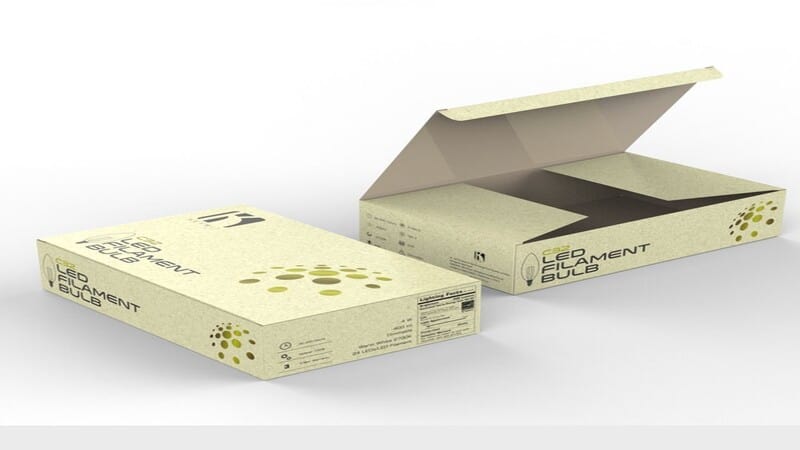
Essential 1: Clear Branding and Messaging
Clear branding and messaging are essential for creating packaging design that effectively communicates the product’s purpose and differentiates it from competitors. This includes using consistent branding elements, such as logos and color schemes, and clearly conveying the product’s features, benefits, and target audience.
The messaging should be concise and easy to understand, with any necessary information presented prominently on the packaging.
Essential 2: Visual Appeal and Creativity
Visual appeal and creativity are critical elements of packaging design, as they can capture consumers’ attention and make the product stand out on the shelf.
This includes selecting typography, color schemes, images, and imagery that align with the brand and target audience and using creative design elements, such as unique shapes or interactive features, to make the packaging more engaging.
Essential 3: Practicality and Functionality
Practicality and functionality are crucial elements of packaging design, as the packaging must protect the product during transportation and storage and provide a user-friendly experience for the consumer.
This includes selecting appropriate packaging materials and dimensions, designing any necessary compartments or inserts, and determining the closure type. The packaging design should also be user-friendly, with any necessary information presented in a clear and accessible manner.
Essential 4: Differentiation and Competition
Differentiation and competition are critical elements of packaging design, as the packaging must stand out in a crowded market and differentiate the product from competitors. This includes studying the competition and identifying unique features or benefits that can be highlighted in the packaging design.
The packaging design should also be aligned with the product’s positioning, whether it be a luxury item or an everyday product, and communicate the product’s value proposition effectively.
Why Is Packaging Design Important for Business?
Packaging design is critical to a product’s marketing strategy and significantly shapes consumer perception and purchasing decisions. Effective packaging design can help differentiate a product from its competitors and create a memorable experience for consumers.
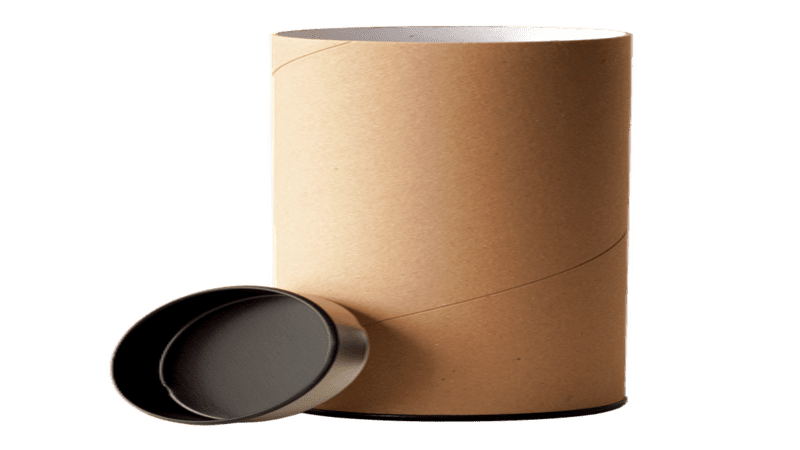
Below are some reasons why packaging design is important for business:
1. First Impression Matters
Packaging is often the first interaction a consumer has with a product. An eye-catching and memorable packaging design can leave a lasting impression and capture the consumer’s attention, leading to increased brand recognition and recall.
Creating a packaging design that aligns with the product’s brand and target audience is vital, creating a positive first impression and generating interest in the product.
2. Influences Consumer Perception
Packaging design can significantly impact consumer perception of a product. A well-designed package can communicate the product’s unique features, benefits, and quality, creating a sense of trust and reliability. Conversely, poor packaging design can make a product appear unprofessional, low-quality, or unappealing, leading to negative consumer perceptions.
3. Competitive Advantage
Packaging design can provide a competitive advantage in today’s highly competitive market. A unique and well-designed package can help a product stand out from its competitors, making it more memorable and attractive to consumers. Effective packaging design can help a product establish a distinctive identity, differentiate it from competitors, and generate brand loyalty.
4. Branding
Packaging design is an essential element of a brand’s identity. It should reflect the brand’s personality, values, and image, creating a consistent and recognizable brand identity. A well-designed package can build brand awareness, generate loyalty, and establish a brand’s reputation.
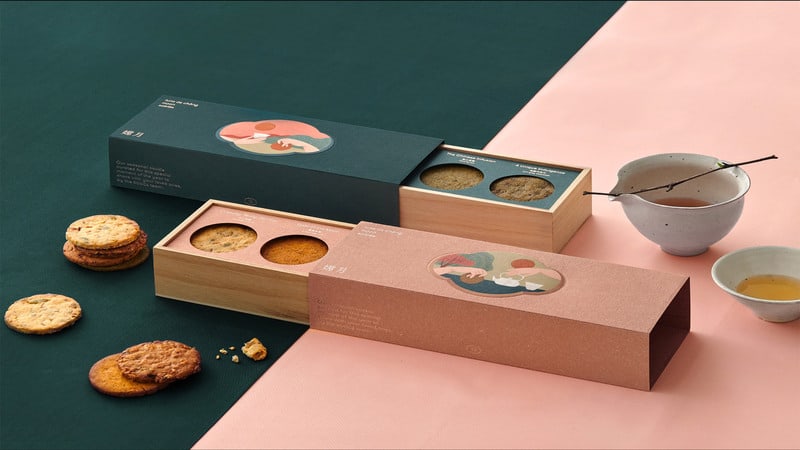
5. Communication
The packaging design should communicate critical information about the product, including ingredients, nutritional information, usage instructions, and more. Ensuring that the packaging design includes all necessary information presented clearly and easily is crucial. Effective communication can increase consumer trust and satisfaction, leading to repeat purchases.
6. Convenience
The packaging design should also consider the product’s convenience, making it easy for consumers to use and store. A well-designed package should be functional, practical, and easy to open and close. It should also be durable enough to protect the product during transportation and storage, ensuring the product’s quality and safety.
7. Sustainability
Sustainability is an increasingly used concept and important consideration for businesses and consumers. Packaging design can play a vital role in reducing waste and promoting sustainability. An eco-friendly and sustainable packaging design can contribute to reducing the product’s environmental impact, creating a positive perception among environmentally-conscious consumers.
Packaging design is a critical component of a product’s marketing strategy. It can impact consumer perception, create a memorable experience, and provide a competitive advantage.
The effective packaging design should align with the product’s brand, communicate the product’s features and benefits, and consider convenience and sustainability. A well-designed package can help businesses achieve their marketing goals, generate brand loyalty, and drive sales.
7 Basic Steps to Packaging Design
Effective packaging design is critical to a product’s success and requires a well-thought-out process. The following seven steps outline the basic process for creating an impactful packaging design.
Step 1: Define Target Audience and Product Positioning
Define your target audience and product positioning. The first step in creating an effective packaging design is to define your target audience and product positioning. The packaging design should align with the product’s brand, target audience, and unique selling proposition.
Understanding the target audience’s demographics, lifestyle, and preferences can help create packaging design that resonates with them. Product positioning can also impact packaging design. A product positioned as a luxury item would require a different packaging design compared to an everyday item.
Step 2: Market Research
Market research is essential for creating a packaging design that meets consumer needs and preferences. It involves studying the competition, analyzing consumer trends and preferences, and gathering feedback from focus groups and surveys. This research can help identify the key features, benefits, and messaging that should be highlighted in the packaging design.
Step 3: Determine the Packaging Type

Determine the packaging type and material. The packaging type and material should be carefully selected based on the product’s needs, target audience, and positioning. Packaging types include boxes, bags, pouches, tubes, and more, and they should be selected based on the product’s shape, size, and functionality.
Material selection is also crucial, impacting the product’s protection, durability, and sustainability. Factors to consider when selecting materials include cost, functionality, and environmental impact.
Step 4: Create a packaging structure
Create a packaging structure. Once the packaging type and material have been determined, the packaging structure should be created. The structure involves selecting the appropriate dimensions, designing any necessary compartments or inserts, and determining the closure type.
A well-designed packaging structure should not only protect the product but also enhance the product’s presentation and user experience.
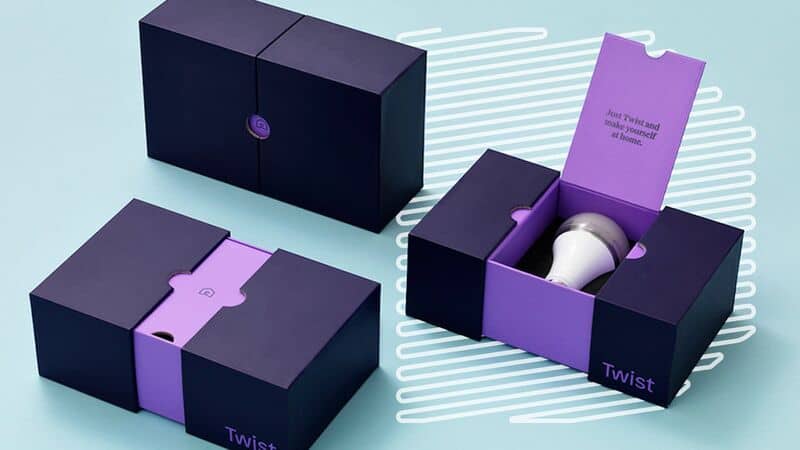
Step 5: Design the Packaging Graphics and Messaging
Design the packaging graphics and messaging. The packaging graphics, artwork, and messaging should be designed to attract the target audience, communicate the product’s unique features and benefits, and differentiate it from its industry and competitors.
This includes selecting typography, color schemes, and imagery that align with the brand and target audience. The messaging should also be clear and concise, highlighting the product’s key features and benefits.
Step 6: Prototype and Test the Packaging Design
Prototype and test the packaging design Prototyping and testing are essential steps to ensure that the packaging design meets the product’s needs and resonates with the target audience.
This involves creating a physical prototype of the packaging design and testing it for functionality, durability, and aesthetic appeal. Feedback from focus groups or surveys can also provide valuable insights into the effectiveness of the packaging design.
Step 7: Finalize the Packaging Design and Production
Finalize the packaging design and production. The final step is to finalize the packaging design and move forward with production. The design should be reviewed for any necessary adjustments or improvements, and production should be coordinated with the selected manufacturer.
Quality control measures should also be put in place to ensure that the final product meets the desired specifications.
Effective packaging design is a critical component of a product’s success. It requires a well-thought-out process that includes defining the target audience and product positioning, conducting market research, determining the packaging type and material, creating a packaging structure, designing the packaging graphics and messaging, prototyping and testing the packaging design, and finalizing the packaging design and production.
By following these steps, businesses can create packaging design that resonates with their target audience, communicates the product’s unique features and benefits, and provides a competitive advantage.
What Programs Can Be Used for Packaging Design?
When it comes to packaging design, there are several programs and tools available that can help designers create stunning images and effective packaging designs. Here are three popular programs and tools that can be used for packaging design:
1. Adobe Illustrator and Photoshop
Adobe Illustrator and Photoshop are industry-standard design software programs used by professional packaging designers around the world. Illustrator is great for creating vector graphics and illustrations, while Photoshop is best for working with raster graphics.
Both programs offer a range of tools and features for designing packaging, such as creating packaging structures and illustrations, adding graphics and text, and adjusting colors and effects.
2. Canva
Canva is a popular online design platform that offers a range of templates, graphics, and design elements that can be used to create packaging designs. The platform is user-friendly and offers a range of customization options, such as adjusting colors and fonts, adding logos and graphics, and resizing and formatting design elements.
3. Mid-Journey AI Art Generators and Tools
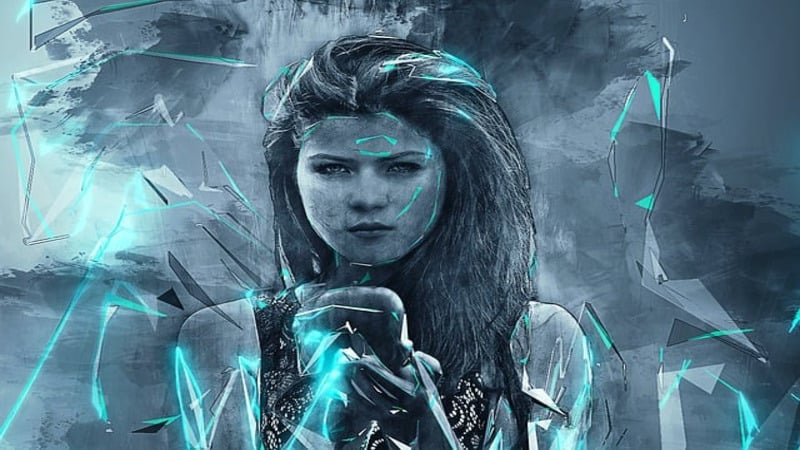
MidJourney AI art generators and tools offer a range of automated design options for packaging, such as generating unique graphics, illustrations, and layouts based on inputted image-generated design parameters. These tools can save designers time and resources while offering unique and creative packaging designs.
What Is MidJourney AI, and How Can It Help with Packaging Design?
MidJourney AI is an AI-powered design platform offering various tools and features for creating unique and creative designs, including packaging design. The platform uses advanced algorithms and machine learning technology to analyze user inputs and generate designs that meet specific design requirements.
What Are the Benefits of Using Midourney AI with Packaging Design?
Using MidJourney AI with packaging design can offer several benefits, including:
1. Time-saving: MidJourney AI can automate parts of the design process, such as generating unique graphics or layouts, which can save designers time and resources.
2. Creativity: MidJourney AI can generate unique and creative design elements that the designer may not have considered, helping artists create more interesting artwork and innovative packaging designs.
3. Customization: MidJourney AI offers a range of customization options, allowing designers and artists to adjust and modify the generated designs to fit their specific needs, concepts, ideas, and preferences.
4. Scalability: MidJourney AI can generate designs for large-scale production quickly and efficiently, making it ideal for companies with high-volume packaging needs.
5. Cost-effective: Using MidJourney AI for packaging design can be more cost-effective than hiring a team of designers, making it an attractive option for small and medium-sized businesses.
Overall, MidJourney AI can help designers and businesses create unique and effective packaging designs by automating parts of the design process, generating creative ideas and unique design elements, and offering a range of customization options. By leveraging the power of AI, artificial intelligence, and machine learning technology, MidJourney AI can help businesses stay competitive and stand out in a crowded market.
How to Use MidJourney AI for Packaging Design?
Here is a step-by-step guide on how to use MidJourney AI for packaging design:
1. Create a MidJourney Account
To get started with MidJourney AI, you’ll need to create an account on the MidJourney website. Depending on your needs and budget, you can sign up for a free or paid account.
2. Access AI Art Generators and Tools
Once you’ve created your account, you can access MidJourney’s AI art generators and tools from your dashboard. You can choose inspiration from a range of design options, including packaging design and illustration, by using an AI tool and selecting the relevant tool.
3. Input Design Parameters
To generate a packaging design using MidJourney AI, you’ll need to input specific design parameters, such as the packaging type, dimensions, and branding elements. You can also select different design styles, images, and colors to customize your design.
4. Use Stable Diffusion
MidJourney’s stable diffusion feature allows you to adjust and modify your design in real time using simple text prompts. For example, you can use stable diffusion to adjust the colors, size, or placement of design elements in your logo or packaging design.
5. Prototype and Test Your Design
Once you’ve generated your packaging design using MidJourney AI, it’s important to prototype and test the design to ensure it meets your needs and specifications. You can use a range of prototyping and testing tools to evaluate the design, such as 3D modeling software, videos, or physical mockups.
6. Finalize the Design

After you’ve prototyped and tested your packaging design, you can finalize the design by making any necessary adjustments and preparing the design files for production. You can export the design files from MidJourney and work with a packaging supplier, artist, or manufacturer to produce the final packaging design.
Tips for Using MidJourney AI for Packaging Design
Unlock the full potential of MidJourney AI for your packaging design journey with our tips. Learn how to use this cutting-edge tool to streamline your design workflow and unleash creativity.
1. Start with Writing a Clear Design Brief
Before using MidJourney AI for packaging design, it’s important to have a clear design brief that outlines your design requirements, such as the packaging type, dimensions, branding elements, and target audience group.
2. Experiment with Different Designs and Art Styles
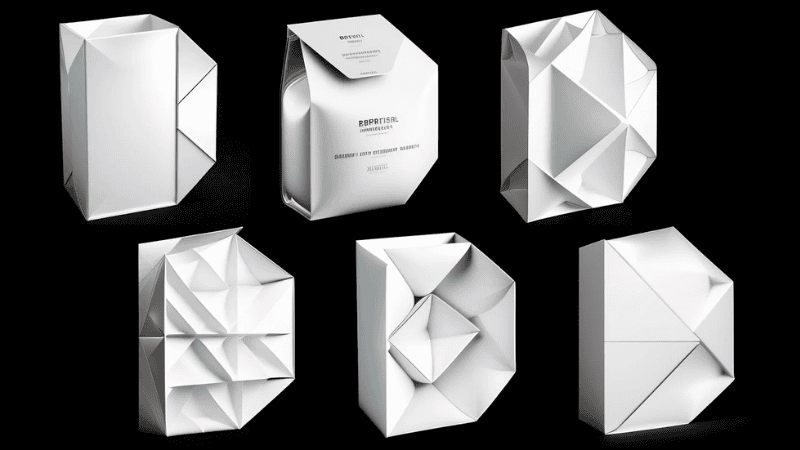
MidJourney AI offers a range of design styles and options, so it’s important to experiment and try different art styles and options to find the best fit for your packaging design.
3. Use Stable Diffusion for Quick Adjustments
MidJourney’s stable diffusion feature allows you to make quick adjustments to your design using simple text prompts. This can be useful for fine-tuning your packaging design in real-time.
4. Prototype and Test Your Design
It’s important to prototype and test your packaging design to ensure it meets your needs and specifications. This can help you get better results and identify any issues or areas for improvement before finalizing the design.
5. Work with a Packaging Supplier or Manufacturer
Once you’ve finalized your packaging design, it’s important to work with a packaging supplier or manufacturer to produce the final packaging. They can help you ensure the design is optimized for production and provide guidance on materials, printing, and finishing options.
The Most Iconic Packaging Design
Packaging design is an essential aspect of branding and marketing, as it protects the product and communicates the brand’s identity to the customer. Iconic packaging designs are those that have stood the test of time and remain memorable, even after years or even decades.
Here are some examples of iconic packaging designs and what makes them successful:
1. Coca-Cola Bottle
The Coca-Cola bottle is a classic example of commercial use of an iconic packaging concept and design. The bottle’s unique curved shape, created in 1915, has become instantly recognizable and is closely associated with the brand. The design also features a distinctive red and white color scheme and the Coca-Cola logo, which is simple yet effective.
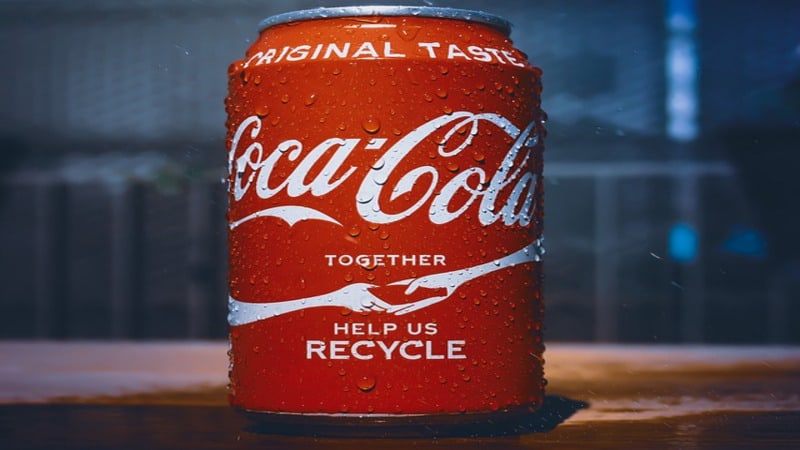
What makes it successful: The Coca-Cola bottle is successful because it is instantly recognizable and closely associated with the brand. It has become a cultural icon and has been the subject of countless marketing campaigns and advertising efforts.
2. Tiffany & Co. Jewelry Box
The Tiffany & Co. jewelry box is another iconic packaging design that has become closely associated with the brand. The design features a simple, elegant blue box with a white ribbon tied around it. The blue color of the box has become known as “Tiffany blue,” and the image is instantly recognizable.
What makes it successful: The Tiffany & Co. jewelry box is successful because it communicates the brand’s identity of luxury and sophistication. The blue color and elegant design are associated with high-end jewelry and have become a symbol of the brand’s quality and exclusivity.

3. Apple Product Packaging
Apple is known for its sleek and minimalist product design, which also extends to its packaging. Apple’s product packaging is often designed to be as simple and elegant as the products themselves, in most cases featuring clean lines and a minimalist aesthetic.
What makes it fun and successful: Apple’s packaging design is successful because it reinforces the brand’s identity of simplicity and elegance. The minimalist design is also practical, reducing waste and making the packaging more eco-friendly.
Conclusion
Packaging design is a critical component of a successful product launch. A well-designed package can attract potential customers, communicate the product’s benefits, and differentiate it from competitors.
By following the basic steps of packaging design, incorporating the essentials of clear branding, visual appeal, practicality, and differentiation, and utilizing advanced tools like MidJourney AI, packaging designers can create exceptional designs that stand out in the market.
Get Custom Packaging From Us!
If you need professional packaging design services for your business, check out Packoi’s website. We offer custom packaging design solutions that can help elevate your brand and increase sales. Contact us today for more information.

